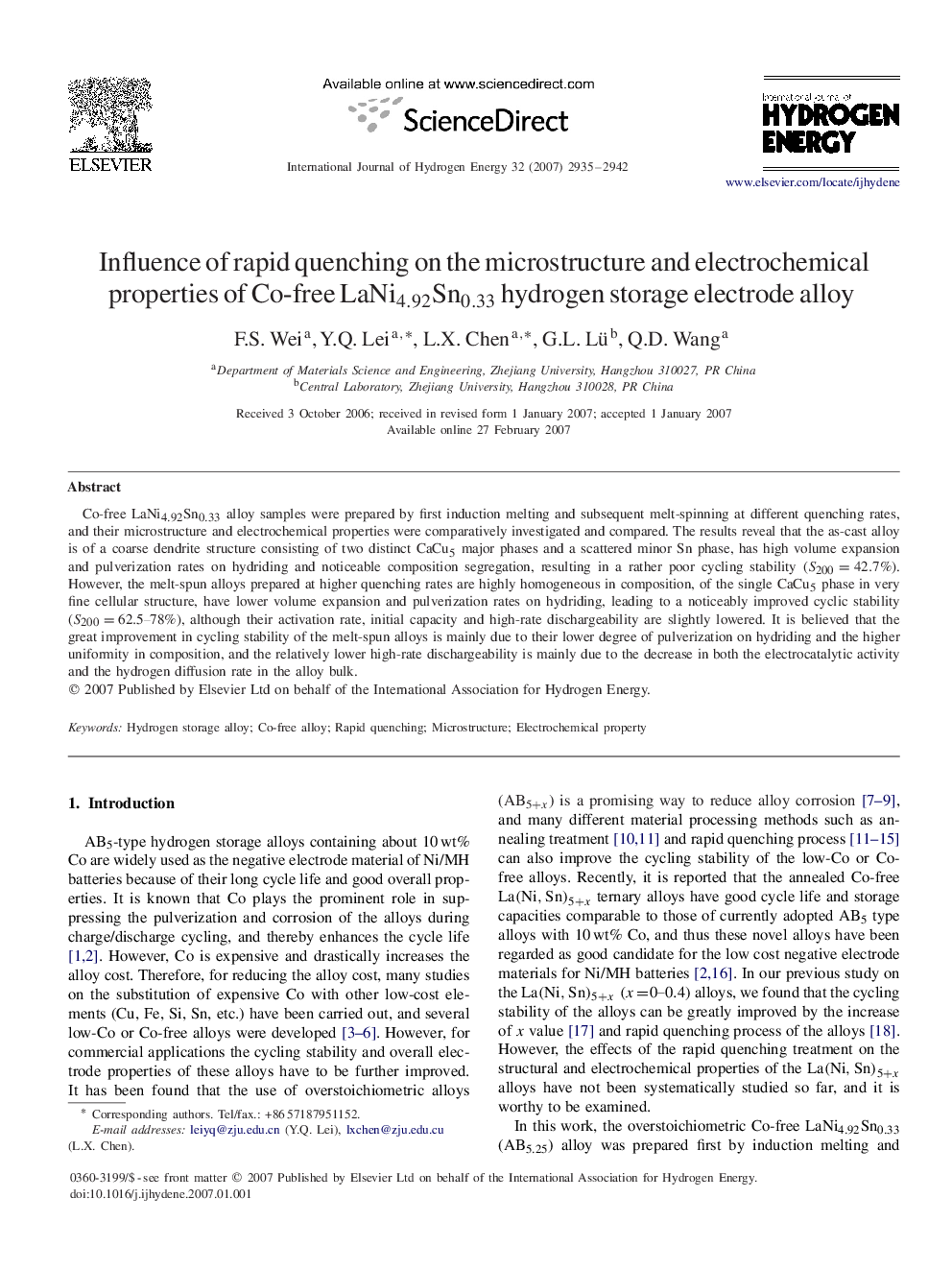| Article ID | Journal | Published Year | Pages | File Type |
|---|---|---|---|---|
| 1280196 | International Journal of Hydrogen Energy | 2007 | 8 Pages |
Co-free LaNi4.92Sn0.33LaNi4.92Sn0.33 alloy samples were prepared by first induction melting and subsequent melt-spinning at different quenching rates, and their microstructure and electrochemical properties were comparatively investigated and compared. The results reveal that the as-cast alloy is of a coarse dendrite structure consisting of two distinct CaCu5CaCu5 major phases and a scattered minor Sn phase, has high volume expansion and pulverization rates on hydriding and noticeable composition segregation, resulting in a rather poor cycling stability (S200=42.7%S200=42.7%). However, the melt-spun alloys prepared at higher quenching rates are highly homogeneous in composition, of the single CaCu5CaCu5 phase in very fine cellular structure, have lower volume expansion and pulverization rates on hydriding, leading to a noticeably improved cyclic stability (S200=62.5–78%S200=62.5–78%), although their activation rate, initial capacity and high-rate dischargeability are slightly lowered. It is believed that the great improvement in cycling stability of the melt-spun alloys is mainly due to their lower degree of pulverization on hydriding and the higher uniformity in composition, and the relatively lower high-rate dischargeability is mainly due to the decrease in both the electrocatalytic activity and the hydrogen diffusion rate in the alloy bulk.
